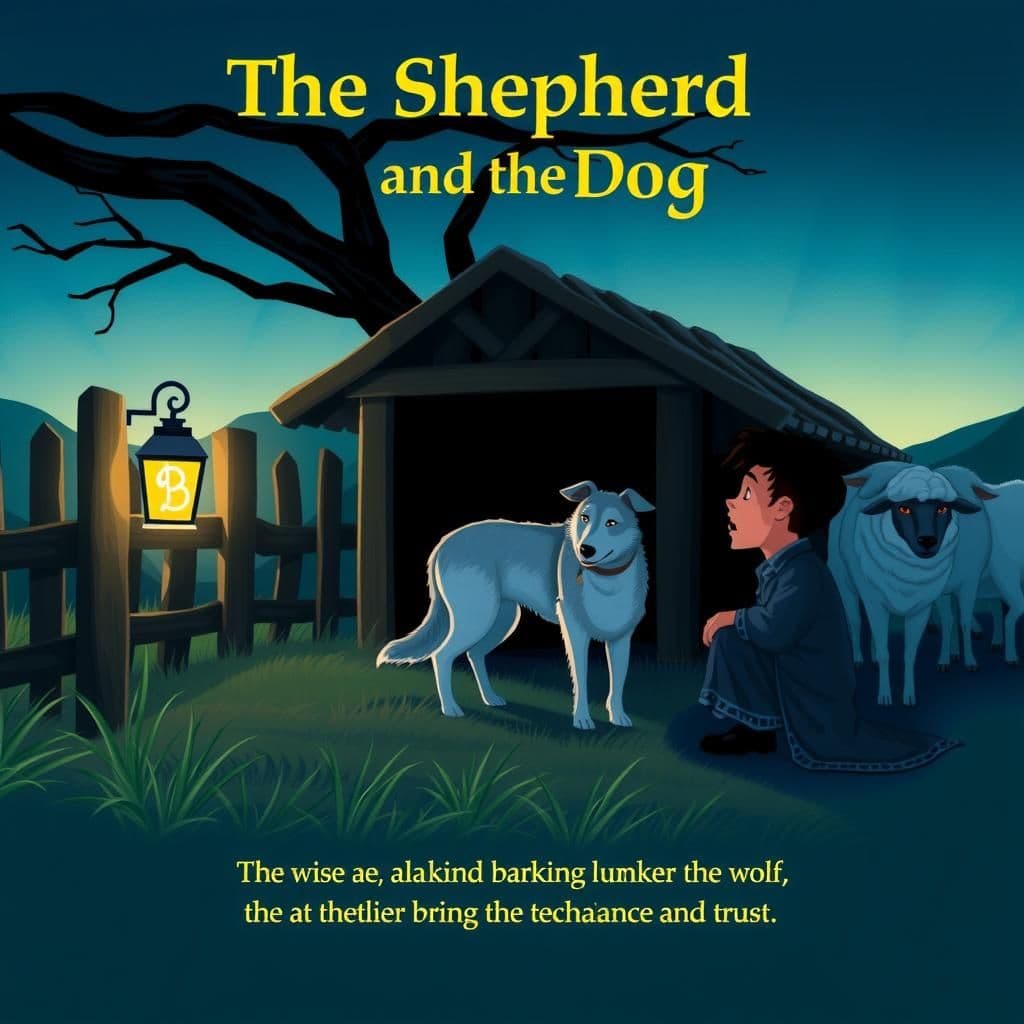The Traveler and His Dog

Story Summary
In "The Traveler and His Dog," a traveler impatiently blames his dog for delaying their journey, believing the dog is not ready. However, the dog reveals that he has been waiting for the traveler, illustrating a key lesson learned from stories: those who procrastinate often misplace the blame on their more diligent companions. This captivating moral story serves as a reminder of the importance of taking responsibility for our own actions.
Click to reveal the moral of the story
The moral of the story is that those who procrastinate often blame others for their own delays.
Historical Context
This fable reflects themes of responsibility and self-awareness, commonly found in Aesop's Fables, which originated in ancient Greece around the 6th century BCE. It underscores the tendency of individuals to project their own shortcomings onto others, a sentiment echoed in various cultures' storytelling traditions, emphasizing the moral of accountability amidst relationships.
Our Editors Opinion
This story reminds us that often we project our own procrastination onto others, failing to recognize that our inaction can hinder collective progress. For instance, in a workplace setting, a team member might blame a colleague for not moving forward with a project, when in reality, they are the one holding up the process by not completing their own tasks.
You May Also Like

The Shipwrecked Man and the Sea
In "The Shipwrecked Man and the Sea," a shipwrecked man awakens on the shore and blames the Sea for its deceptive calmness that leads sailors to disaster, making it a compelling example of well-known moral stories. The Sea, taking the form of a woman, defends itself by explaining that it is the winds that disturb its natural tranquility and create perilous waves. This short story serves as a quick read with moral lessons suitable for class 7, illustrating the importance of understanding the true causes behind appearances.

Hercules and the Carter
In this simple short story with a moral, a Carter finds his wagon stuck in a rut and, instead of taking action, prays to Hercules for help. Hercules scolds him for his laziness, prompting the Carter to unload valuable goods, which allows the horses to easily pull the wagon free. This short moral tale emphasizes the importance of self-reliance and taking initiative in the face of challenges, making it a noteworthy entry among top 10 moral stories in folklore.

The Shepherd and the Dog
In the short bedtime story "The Shepherd and the Dog," a shepherd nearly makes the mistake of penning a wolf with his sheep for the night. The wise Dog warns him that this decision endangers the safety of the flock, illustrating a simple lesson from stories about the importance of discernment. This moral story for kids emphasizes that not all companions are safe, a vital lesson in choosing who to trust.
Related Collections
Other names for this story
Journeying with My Canine, The Loyal Companion's Wait, Adventure Awaits: Dog’s Perspective, The Patient Pooch, Ready When You Are, The Waiting Dog, Traveler's Best Friend, The Journey of Trust
Did You Know?
This fable highlights the theme of misplaced responsibility, illustrating how individuals often project their own procrastination onto others, while the more diligent companions remain ready and eager to proceed. It serves as a reminder of the importance of self-awareness and accountability in our actions.
Subscribe to Daily Stories
Get a new moral story in your inbox every day.